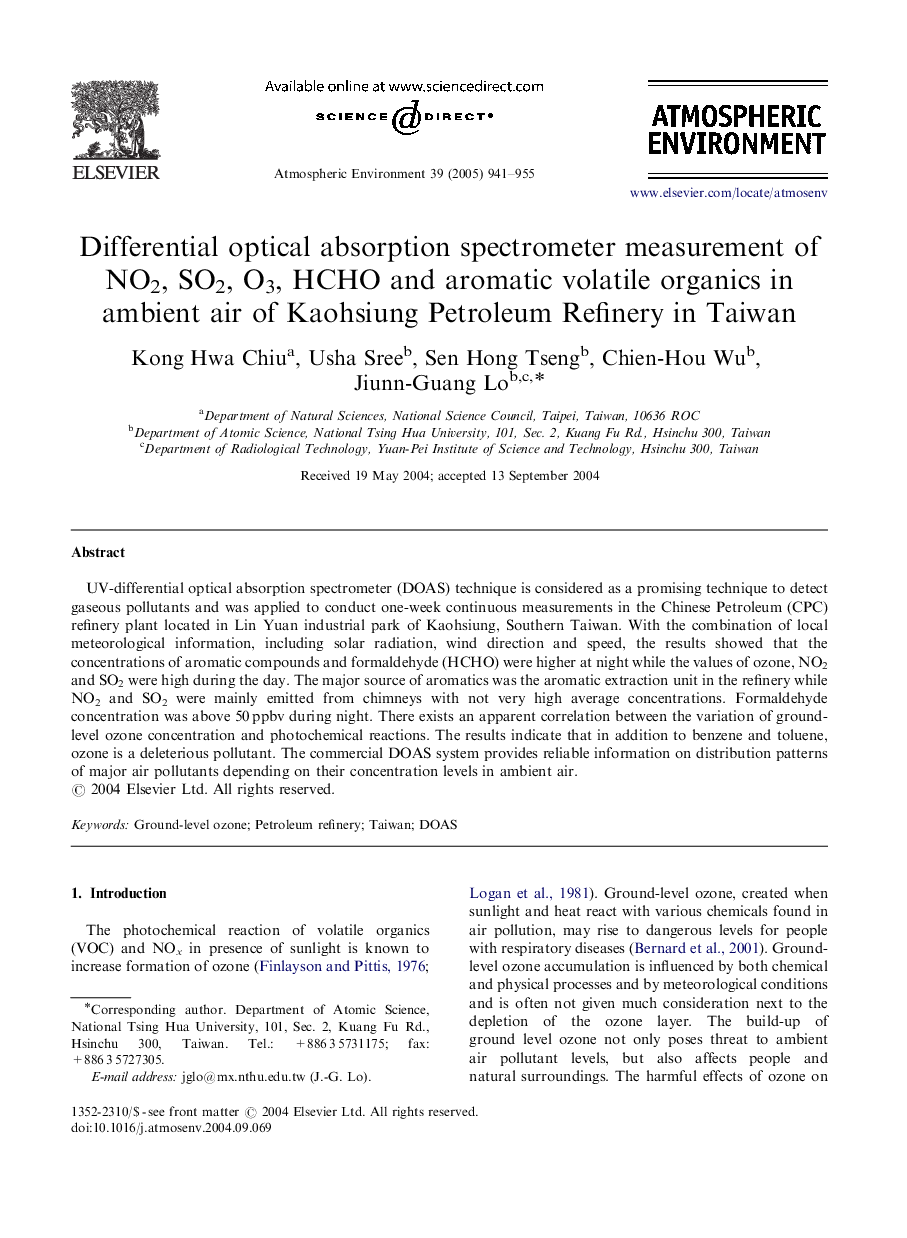| Article ID | Journal | Published Year | Pages | File Type |
|---|---|---|---|---|
| 9458718 | Atmospheric Environment | 2005 | 15 Pages |
Abstract
UV-differential optical absorption spectrometer (DOAS) technique is considered as a promising technique to detect gaseous pollutants and was applied to conduct one-week continuous measurements in the Chinese Petroleum (CPC) refinery plant located in Lin Yuan industrial park of Kaohsiung, Southern Taiwan. With the combination of local meteorological information, including solar radiation, wind direction and speed, the results showed that the concentrations of aromatic compounds and formaldehyde (HCHO) were higher at night while the values of ozone, NO2 and SO2 were high during the day. The major source of aromatics was the aromatic extraction unit in the refinery while NO2 and SO2 were mainly emitted from chimneys with not very high average concentrations. Formaldehyde concentration was above 50Â ppbv during night. There exists an apparent correlation between the variation of ground-level ozone concentration and photochemical reactions. The results indicate that in addition to benzene and toluene, ozone is a deleterious pollutant. The commercial DOAS system provides reliable information on distribution patterns of major air pollutants depending on their concentration levels in ambient air.
Related Topics
Physical Sciences and Engineering
Earth and Planetary Sciences
Atmospheric Science
Authors
Kong Hwa Chiu, Usha Sree, Sen Hong Tseng, Chien-Hou Wu, Jiunn-Guang Lo,
